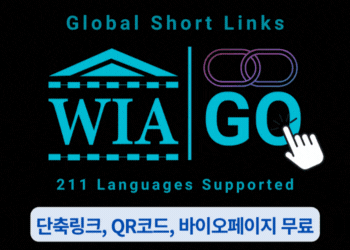French vs Chinese Auriculotherapy: Key Differences | The Korean Today Health Column
French vs Chinese Auriculotherapy: Key Differences
2500 Years of Tradition Meets Modern Science – Which Approach is Right for You?
The Korean Today Auriculotherapy Expert | KIHA Official Certification
Today’s Wellness Point
While both are called auriculotherapy, the French and Chinese approaches have completely different philosophies and methodologies. The 2500-year-old Chinese tradition and the 1957 French innovation – what are the key differences? From WHO’s 43 standardized points to China’s 200+ acupoints, let’s explore the characteristics and advantages of each approach.
 |
[ French vs Chinese Auriculotherapy Comparison Infographic]
1. Historical Background: A 2500-Year Time Gap
Tracing the origins of auriculotherapy reveals two distinct historical backgrounds. Chinese auriculotherapy was first recorded in the Yellow Emperor’s Inner Canon around 475 BC, boasting an impressive 2500-year history. In contrast, French auriculotherapy was systematized only in modern times by Dr. Paul Nogier in 1957.
2500 Years Chinese History | 68 Years French History | 91.5% AI Diagnosis Accuracy |
Interestingly, Dr. Paul Nogier was inspired by a small scar he discovered on a patient’s ear who suffered from sciatica. This patient had experienced remarkable pain relief after having a specific area of the ear cauterized by a local healer. This became the starting point for modern French auriculotherapy, and when introduced to China in 1959, Nogier earned the title “Father of Modern Auriculotherapy.”
2. Philosophical Approach: Meridians vs Neurology
The most fundamental difference between the two approaches lies in their philosophical foundations. The Chinese method is based on meridian theory, emphasizing qi circulation and whole-body energy balance. Conversely, the French approach uses a neurological method, scientifically analyzing cranial nerve and autonomic nervous system reflexes.
“The Chinese method pursues whole-body harmony through ‘functional connections,’ while the French method seeks neurological precision through ‘anatomical accuracy.’ Both are WHO-recognized valid therapies, but the choice should be made based on the patient’s condition and treatment goals.”
– KIHA Research Team
| Category | Chinese (2500 Years) | French (1957 Development) |
|---|---|---|
| Number of Points | 200+ points | 43 points (WHO standard) |
| Theoretical Base | Meridian theory | Neurological approach |
| Diagnostic Method | Functional connection | Anatomical mapping |
| Primary Effect | Whole-body balance | Neural reflex |
| Representative Point | Shenmen – Stress relief | Cosmonaut Point – Sedation |
3. WHO Standardization: From 39 to 43 Points
In 1982, the WHO Western Pacific Regional Office designated China as the lead country for auriculotherapy standardization. In 1990, WHO applied strict criteria and adopted 39 standard points based on three requirements: ① internationally common names ② proven therapeutic value ③ generally accepted anatomical locations.
💡 WHO Standardization Criteria:
- Points with internationally common names
- Points with clinically proven therapeutic effects
- Points with generally accepted anatomical locations
Currently expanded to 43 points, 2024 research shows that AI-powered diagnostic systems achieve 91.5% accuracy, demonstrating the potential for integrating both approaches. Clinical studies with menopausal women showed significant improvement in hot flashes and sleep disorders after just 8 treatment sessions.
4. Practical Selection Guidelines
📌 Finding the Right Approach for You
- Symptom Analysis: French method for acute pain, Chinese method for chronic fatigue
- Time Consideration: French for quick effects, Chinese for fundamental treatment
- Professional Consultation: Consult KIHA-certified specialists for personalized recommendations
🎯 Expected Benefits:
- French Method: Precise neural reflexes for immediate symptom relief
- Chinese Method: Whole-body balance restoration for fundamental health improvement
⚠️ Precautions
- Pregnant women should avoid stimulating certain auricular points
- Treatment is contraindicated when ear inflammation or wounds are present
- Excessive stimulation may cause dizziness
- Always consult with a specialist when professional treatment is needed
Conclusion
French and Chinese auriculotherapy originated from different philosophies, yet both are WHO-recognized valid therapies. China’s 2500-year tradition brings depth and wisdom, while France’s modern science offers precision and accuracy – each has its unique value.
The key is not determining which approach is superior, but understanding which methodology better suits your body’s condition and treatment objectives. The future of auriculotherapy, enhanced by AI technology integration, promises even greater precision and effectiveness.
In the next column, we will explore ‘Auricular Diagnosis: Reading Health Signals Through the Ear’ in greater detail.
🚀 Next Week Preview
“Auricular Diagnosis: Reading Health Signals Through the Ear” – Discover the secrets of how experts can assess health conditions just by examining the ears
📞 070-8065-2917 | 📧 kiha-go@naver.com
KIHA Wellness Research Team
Digital Age Wellness Guide by Korea Integrated Healing Association
Discover new wellness insights continuously
The Korean Today Health Column | Auriculotherapy Expert
This column is intended to provide auriculotherapy self-care information and cannot replace diagnosis or treatment based on individual health conditions.
© 2025 Korea Integrated Healing Association (KIHA)
Digital Wellness Ecosystem | Traditional Wisdom × Modern Science
Integrated Approach for a Healthy Future
<저작권자 ⓒ 코리안투데이(The Korean Today) 무단전재 및 재배포 금지>

